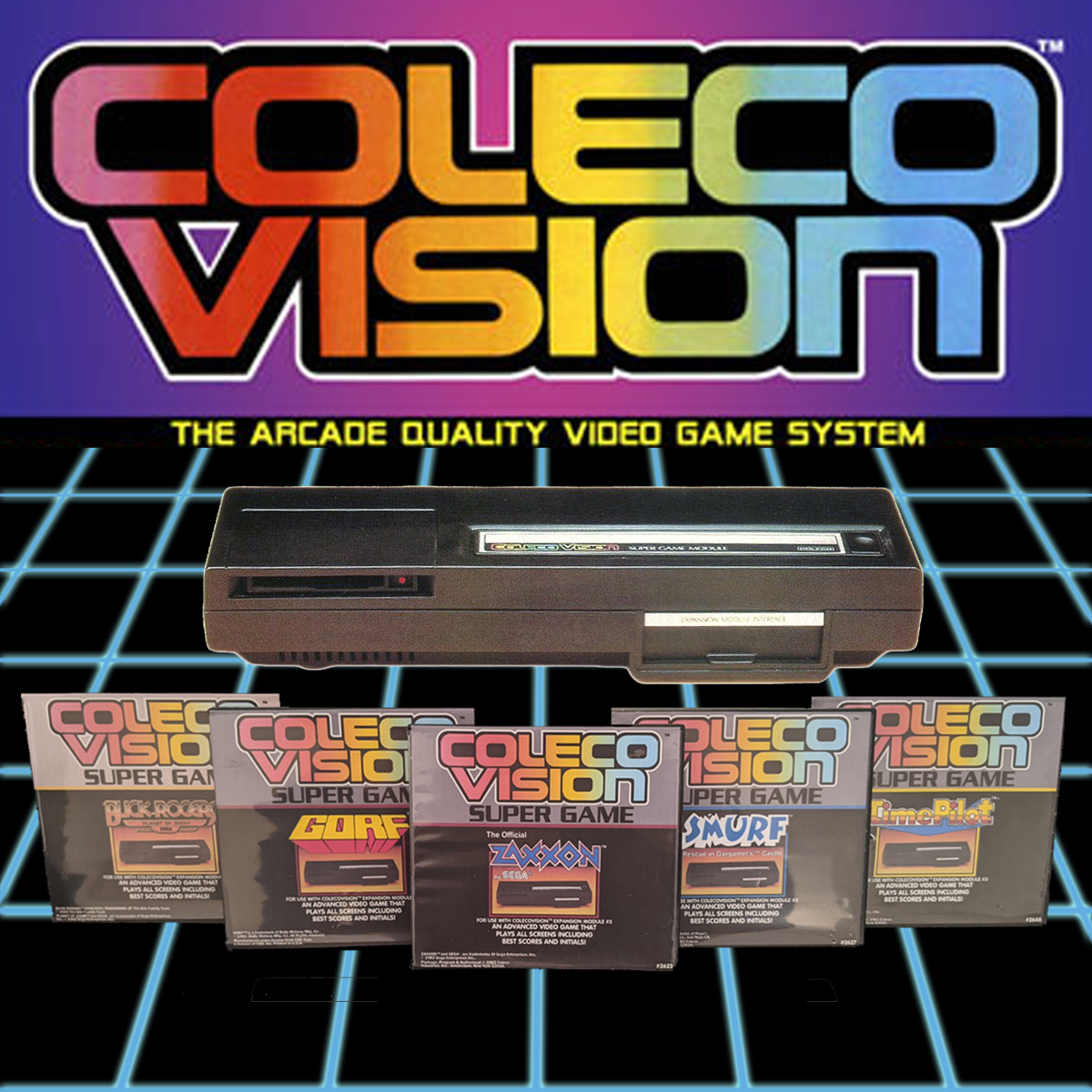| |
 |
|

Article from Colecoboxart.com
The following is a quote from the article, One million A.C.(after ColecoVision) Brown, Michael William; Electronic Fun: Computers and Games; June 1983
Note: The article contains several screen shots and a what appears to be a mock up of the Super Game and several game wafers. "...the Super Games are stored on mini-cassettes (which are about the length and width of a business card) called Super Game Wafers... the module has a magnetic micro-tape drive mechanism behind a slot in the front left panel. Inside the wafers is approximately 50 feet of specially formulated magnetic tape about an eighth of an inch wide."
Brown claims to have played the system for 8 hours over two different days. Load time for the wafers is clocked at about 10 seconds. Super Games Brown tested: Super Donkey Kong, Super Donkey Kong Jr., Super SmurfSuper Smurf Rescue in Gargamel's Castle. Brown further notes better colors and additional levels in all three games. Planned titles included: Zaxxon, Buck Rogers Planet of Zoom, Time Pilot, Turbo and Sub-Roc. Brown also notes the ability to enter your initials for high score, which is then stored on the tape.
In Video Games Magazine(Feb.'84) an article on the Texas Instruments Compact Computer 40 (a peripheral for the TI 99/4A) mentions the tape wafers meant for the Super Games: "...this system uses the Entrepo floppy wafer system that is in use elsewhere, and was almost part of Coleco's Super Game Module and ADAM." The Super Game Module appeared to not have a realistic chance of success at Coleco Industries. In an interview of Coleco president, Arnold Greenberg, by Steve Bloom (Video Games, Oct. '82) Bloom paraphrases Greenberg as saying, "...it is Colecos resolve to market a keyboard (Module #3) some time next year." In Electronic Games (Jan. '83): Test Lab (Cohen, Henry B.) writes that, "...Coleco is working on a keyboard and Ram Cram for ColecoVision which should turn the system into a full- scale, high powered home computer system." Clearly Coleco intended to develop a ADAM-like computer all along, but the question remains as to why they decided to develop the Super system in the first place. If the Super module had been released it likely would have insured Colecos success for at least a while longer. Although given the cynicism of magazine writers and consumers after the Super Module failed to appear it is uncertain if it would have been enough to save Coleco from its eventual fate.
CLICK FOR ENLARGEMENTS
  
  
  
  
|
|